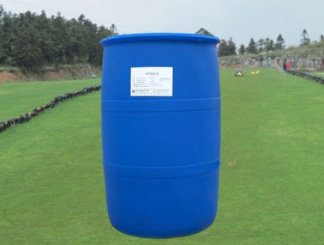In the textile industry, many dyeing and finishing auxiliaries often use the complex of surfactants. However, the combination of surfactants produces synergistic effects and synergistic effects, and there are functions that a single surfactant does not have. Therefore, the compounding technology and synergistic effect of surfactants, as well as the relationship between the surface characteristics and application properties after compounding, have become an important research direction in the field of printing and dyeing auxiliaries, and also an extremely important research content to improve the quality of printing and dyeing. At present, there is a big gap between the quality of printing and dyeing auxiliaries in China and foreign commodities. In addition to monotonous varieties, imperfect performance and insufficient development capacity, there is little research on the principle of surfactant compounding and its relationship with application performance, which needs to be strengthened to provide more theoretical guidance for product development and application.

Because the fabric refining is carried out in a certain concentration of caustic soda solution, and the surface tension of NaOH solution is very high, it is difficult to penetrate into the fiber. Therefore, surfactant must be added in the refining process to reduce the surface tension of the solution to speed up the penetration of alkali solution. Therefore, the surfactant used in refining depends on its ability to reduce the surface tension and the penetration speed.
From the basic wetting equation (formula 1), because the surface tension of new synthetic fiber dominated by polyester is about 42mn / M and the surface tension of refining solution is about 35MN / m, polyester is easy to be wetted by refining solution in refining solution. However, if the liquid contains oil wax, the interfacial tension between polyester fiber and oil wax will be reduced γ Ls increases and is close to the surface tension of polyester fiber, so the solution containing oil wax is not easy to wet the polyester fiber. If oil wax and refining liquid exist on polyester fiber at the same time, even if polyester has been wetted by oil wax, because γ Polyester wax > γ For polyester refining liquid, the oil wax on polyester will automatically shrink into oil droplets (i.e θ 90 °), and then emulsified by surfactant and removed from the fabric, so only substances with lower surface tension are selected( γ LG) to wet the fabric.
At the same time, the oil and wax contained in the new synthetic fiber are fatty substances. Starting from the structural similarity, fatty alcohol polyoxyethylene ether and alkyl phenol polyoxyethylene ether should be used together, and the wettability of the former is better than that of the latter, which is conducive to reducing γ LG and γ Ls to improve the wetting effect.
After the non-ionic surfactant is added to the anionic surfactant, the non-ionic surfactant is inserted into the anionic surfactant micelles to form mixed micelles. The shorter the polyoxyethylene chain of the non-ionic surfactant or the shorter the hydrophobic chain of the anionic surfactant, the easier it is to be inserted, so as to improve the interface adsorption speed, reduce the surface tension and improve the wettability. Moreover, when the surfactant concentration is lower than CMC, due to the directional adsorption of single molecules on the interface, saturated adsorption appears on the interface with the increase of surfactant concentration in the solution, which improves the wettability (as shown in Table 3). However, when the surfactant concentration is higher than CMC, micelles are formed in the solution. With the increase of concentration, the speed of micelle separation into single molecules slows down, which affects the saturated adsorption of single molecules on the interface, Therefore, the concentration of wetting agent should not be too high, as long as it is slightly greater than CMC.